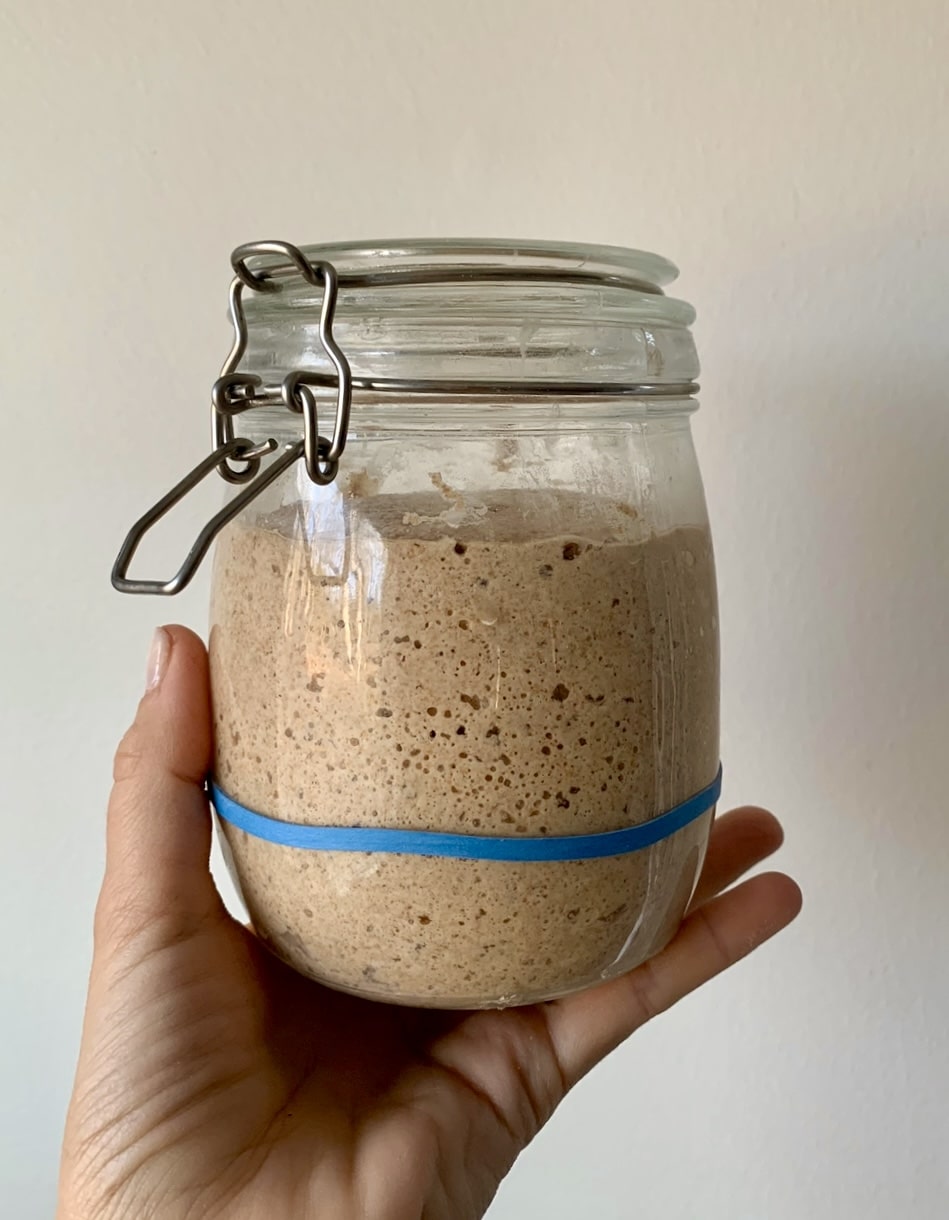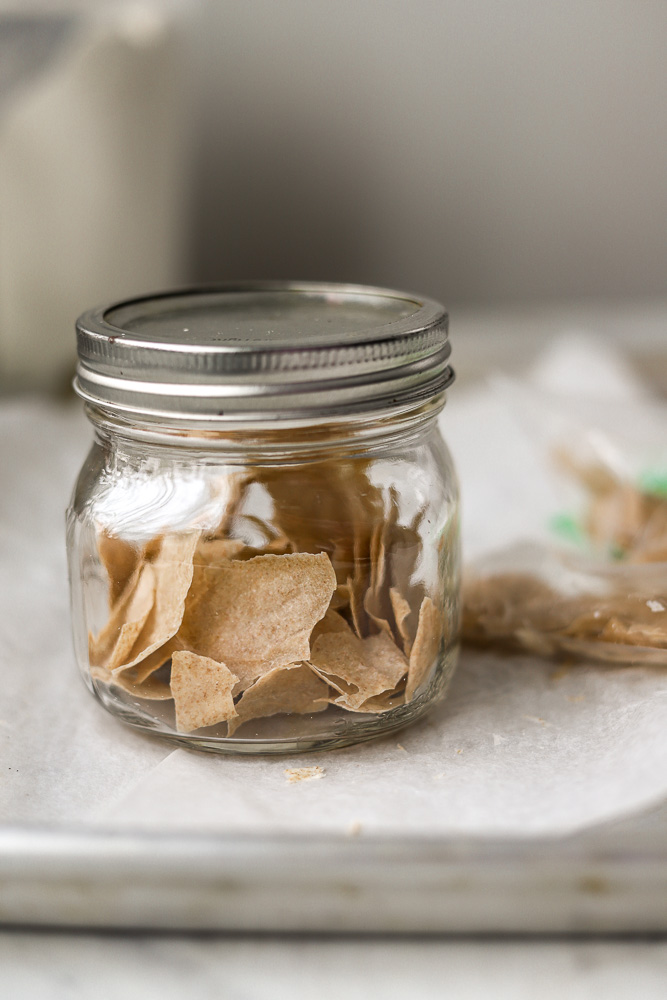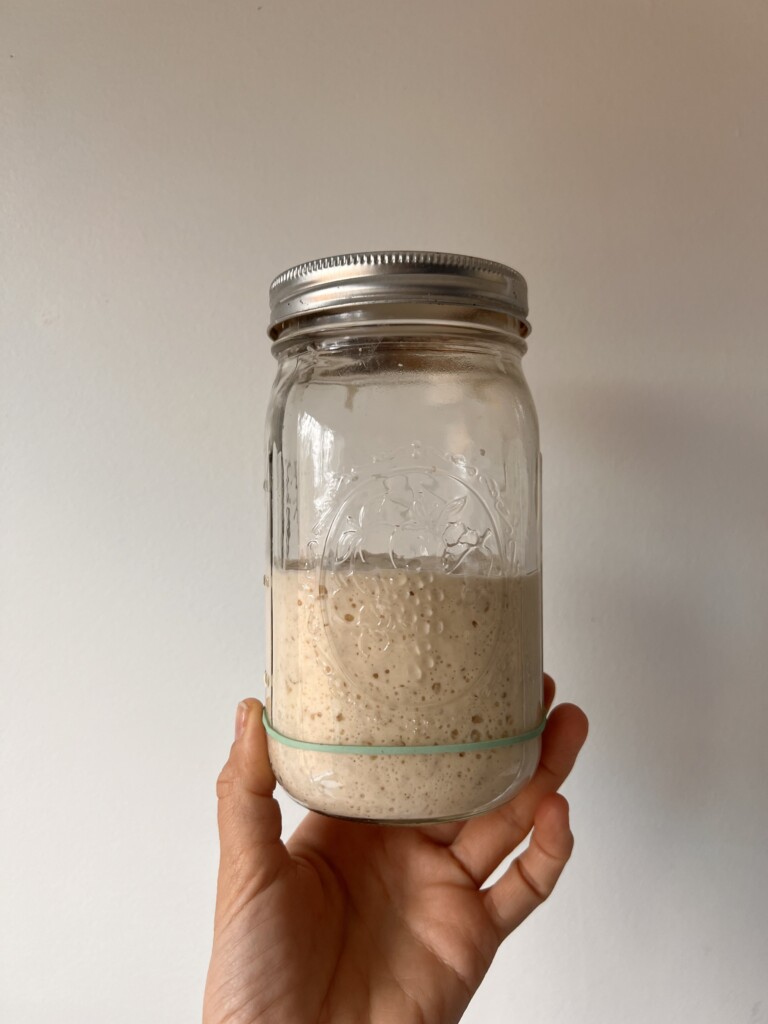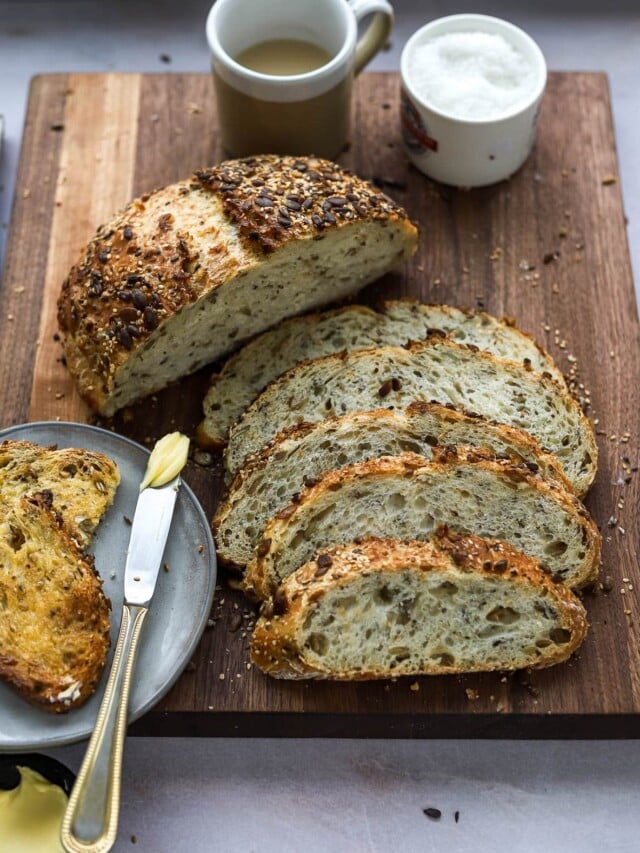
How to Rehydrate A Sourdough Starter
- In a medium size glass jar, mix a small amount of dehydrated sourdough starter with 60 g of warm water (about 80 degrees F). Give the mixture a stir, and place the lid on top loosely. Allow the starter to dissolve into the water. This will take 1-2 hours, at room temperature.
- Next, to the jar, add 60 g of unbleached flour (either all purpose, whole wheat, or rye work well). Stir the mixture very well, scrape down the sides with a rubber spatula, and place the lid loosely back on top.
- Let the starter sit in a warm spot at room temperature until the mixture begins to show signs of fermentation – it will slowly rise, and have bubbles throughout.
- When you see signs of activity, scoop out and discard half of the starter mixture, and feed it again with 60 g of warm water, and 60 g of the flour of your choice.
- A healthy starter will bubble up and become active with a 6-8 hours, so once your starter is active, it is ready to use in all of your favorite sourdough recipes.

go from this dehydrated state…

to this! active, bubbly fed sourdough starter
Feed the Sourdough Starter regularly
Check the starter every few hours and feed it with equal parts flour and water when you see signs of activity like bubbles.
If you’re one to forget, or get wrapped up in other projects, set a timer on your phone to remind you to check on your little science project.
Ready to bake your first loaf of sourdough Bread? Check out these Sourdough Recipes:
The best Sourdough Discard Crackers
Sourdough Starter Tools I love
- A perfect size glass jar from Weck. I use this jar without the rubber seal.
- A cool tool with a funny name! This Wooden Spurtle makes stirring up your sticky starter in the jar a breeze. The wooden spurtle will last forever, and won’t cause a chemical reaction like metal stirrers will.
- Kitchen Scale – don’t be intimidated by using a kitchen scale, it is intuitive, and gives your most consistent professional results every time. Just go for it!
Pro Tips for a Successful Sourdough Starter
- Repeat until active
Continue feeding and monitoring the starter until it is noticeably bubbling and doubling in size within a 8-10 hours
- Temperature is key
Maintaining a warm environment is crucial for activating the yeast in the starter. Warmer temperatures speed up fermentation, while colder temperatures slow it down. I like to keep my sourdough starter in the warmer part of my kitchen (usually between 70-75 degrees F).
- Be patient!
Baking sourdough bread from scratch is an exercise in patience. it is a meditative process that is incredibly satisfying and fulfilling. The process can’t be rushed, we have to let nature do its thing. Rehydrating a sourdough starter might take a few days, so be patient and check on it regularly.
If you’re not using your sourdough starter in the near future, remember to place it in the fridge. This will put your sourdough start into a dormant state, so that it won’t die when left out for too long without being fed regularly.
Want to know how to Dehydrate your Sourdough Starter? Check out the FULL TUTORIAL here.
There you have it! Let me know if you try this rehydration method, and comment any questions or comments that you have below. I love hearing from you, and this is the best place to reach me directly!
Happy Baking xoxo LeAnne



Michelle L Gellman says
Gorgeous site, love your recipes 🍇🥐🫒🍅🍒🍆 my husband loves to bake.
Looking forward to our new adventure
Michelle and Stephen Gellman 🥖🥐🧄🍆🍒🫒🍇🍉
LeAnne says
Hi Michelle! I’m so glad you love it, thanks so much for the feedback and the kind words!
Happy baking xo LeAnne
Trina Kemp says
Thanks so much! I’ve made a dehydrated backup but haven’t had to put it to use. Now I know how if the worst happens!
LeAnne says
Always good to be prepared! So glad it was helpful.